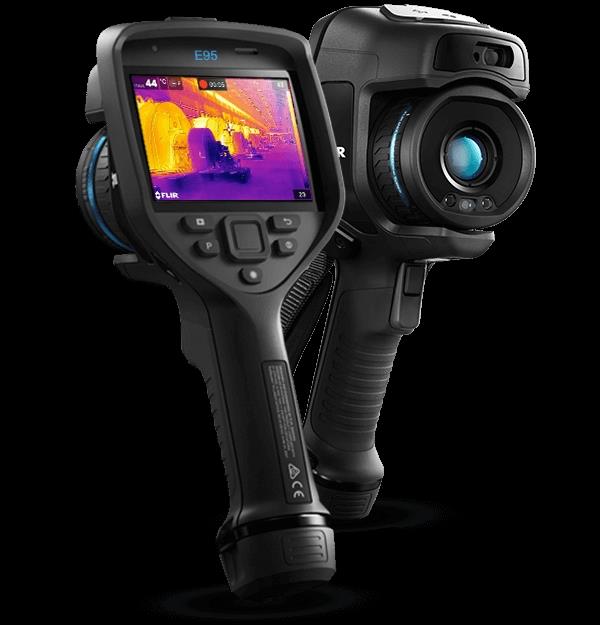Fluke Thermal imaging cameras are now used in various market areas. Whether it is in the field of contactless temperature measurement, such as: condition monitoring, fire automation, or night vision, such as security, maritime, etc., there is a complete fluke thermal imaging camera product line for the market to meet the various needs of customers. This is also true in the field of scientific research, where some R & amp; D customers are beginning to realize the power of thermal imaging technology. For these customers, we have low-priced entry-level products to meet their daily R & amp; d work, as well as high-end products to provide customers with solutions. Accuracy, reliability, sensitivity and high performance are essential in R & amp; d applications, which are important reasons why fluke thermal imaging cameras are widely used in scientific research, including: Industrial Research, academic research, nondestructive testing, material analysis, security and aerospace technology.
Today, architects and construction companies are facing a variety of new materials and shorter completion times and other issues. Effective planning, testing and reporting requirements for air tightness and insulation are becoming more stringent and should be avoided in a way that is detrimental to a healthy living environment caused by mold growth or excessive humidity. Fluke Thermal imaging cameras can provide important information to avoid lengthy and costly maintenance work. Therefore, Fluke Infrared Thermal Imager Technology is an advanced technology and effective method suitable for many applications in the field of architecture. As an architect, you should know something about the following applications of fluke Thermal imaging cameras!
1. Find leakage points
Fluke Thermal Imaging CameraIt is a detection tool that can be used to quickly find and inspect pipe leaks, and can also be used to detect water pipes laid under floors or gypsum boards. Fluke Thermal imaging cameras can easily detect the true condition of the heat of a pipe that radiates through the surface.
2, the detection of building structure
Fluke Thermal Imaging Camera is an effective detection tool for finding building defects quickly. Fluke Thermal imaging cameras can be used to detect the qualification of building structures and to quickly convert problems such as heat loss, moisture and air leakage into visible color thermal images.
3. Drying of houses
In order to speed up the drying process of buildings, it is usually necessary to use drying equipment. The heat generated by the drying equipment evaporates the moisture from the walls and other areas. Still wet areas can be easily detected by fluke thermal imaging cameras and appear in the form of "cold spots" in infrared images.
4. Visualization of energy loss
Thermal gradients not only show the location of energy loss in the house, but can also cause condensation or deposition of water in the surrounding air, so mold will breed in these areas, thus affecting the health of the occupants. Fluke Thermal imaging cameras can quickly find these problems.
5, two times planning and quality assurance
Infrared technology is not only suitable for two of plans, but can also be used for building quality assurance and routine testing. From the hot image of the construction drying, we can see the progress of the drying process, so as to take the necessary measures to speed up the drying process. If the drying process is accelerated by the Fluke Thermal imaging camera and verified by infrared images, it indicates that the house is completely dry, which means that it can be delivered to the owner more quickly, and at the same time, it means that the builder can reap greater benefits.
6, detection of air leakage point
A common method used to detect air leakage points is through the detection of air exchange rates and the use of a testing process known as the "wind valve". During this process, negative pressure will be generated in the house. At this point, the outdoor pressure is greater than the indoor pressure, so the air will enter from the poorly sealed area. Fluke Thermal imaging cameras are able to quickly detect flowing airflow, and poorly sealed areas can be easily identified and resolved before the next step is completed, avoiding the potential construction problems from becoming expensive and tricky problems.
7, looking for roof leakage point
The evaluation of roof leakage system is also one of the common applications of fluke thermal imaging camera. Water is stored for a longer period of time than normal roof materials, and when the roof cools down at night, the area with water can be easily detected by Fluke thermal imaging cameras because its temperature is higher than in other areas. The mere repair of leaking areas of the roof without replacing the entire roof has greatly saved costs.

Related Industry Knowledge
- Three resolution of the thermal imaging camera
- Techniques for measuring Infrared Thermal Imager
- Technical index of infrared thermal imaging camera
- What are the advantages of thermal imaging cameras?
- Do you know how thermal imaging cameras work?
- How to choose an on-line thermal imaging camera
- Composition and Characteristics of thermal imager
- Wide application of infrared thermal imaging camera
- What are the applications of thermal imaging cameras in the electronics industry
